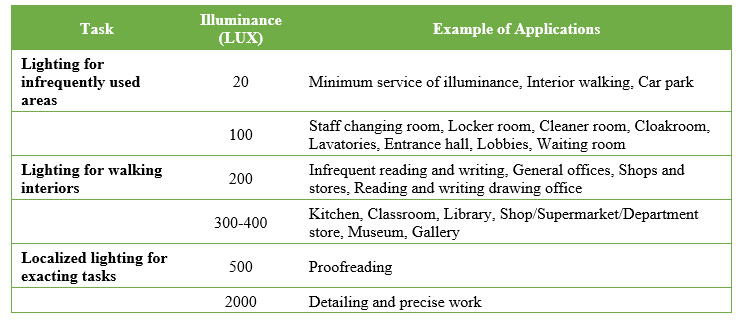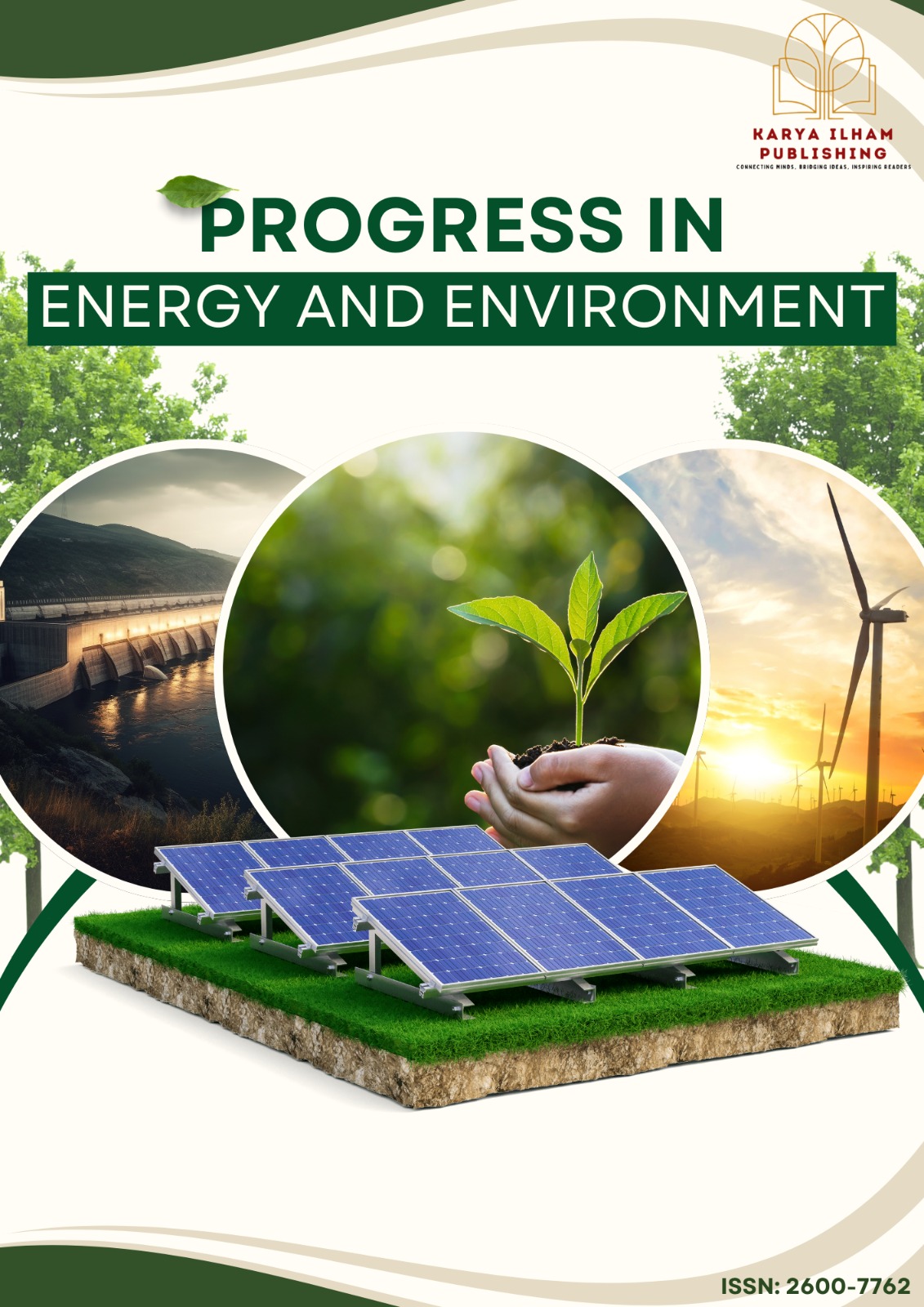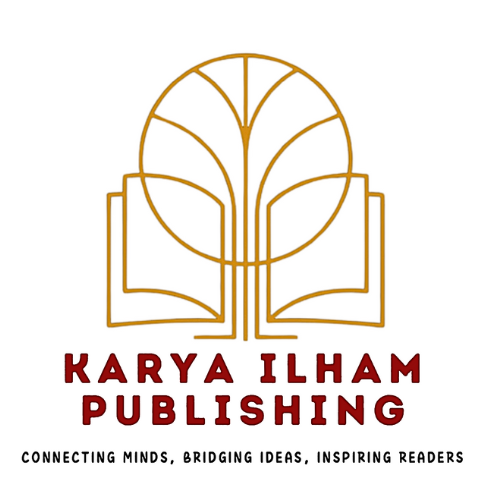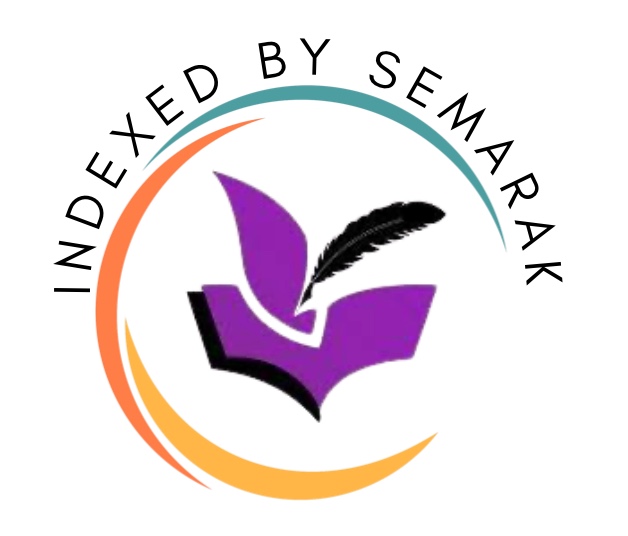Natural Daylighting for Energy Efficiency Application at Malaysia Exhibition Space: A Conceptual Review
DOI:
https://doi.org/10.37934/progee.31.1.5259Keywords:
Natural Daylighting, Energy Efficiency, Sustainability, Exhibition SpaceAbstract
With the increasing emphasis on sustainability and energy efficiency, integrating natural daylight in museum exhibition centers presents an opportunity to reduce energy consumption while enhancing visitors’ experience. This paper investigates the role of natural daylighting as a sustainable design strategy in exhibition space among Malaysian and international standards. It assesses the awareness and implementation of daylighting practices among designers and users. A systematic review from 10 peer researchers summarized the approach to propose the greatest daylighting strategies in exhibition spaces. Findings allocate the favors within broader sustainable architectural practices and design while applying lighting technology. The anticipated outcomes of this study include practical recommendations for architects and exhibition organizers and insights into balancing sustainability and functionality. This research aims to contribute to energy-efficient practices in Malaysian cultural infrastructure, aligning with ecological and cultural objectives.
References
[1] A. Hurlbert, and C. Cuttle, New Museum Lighting for People and Paintings. LEUKOS 16 (2019) 1–5. https://doi.org/10.1080/15502724.2019.1676019
[2] S.L. Shamri, E. Mohd Husini, F. Arabi, A. Abdul Manaf, M. Mat Idris, and J. Jamaludin, Strategies in Improving the Building Efficiency and Daylighting: A Case Study of Green Building, Planning Malaysia 20 (2022) 99-109. https://doi.org/10.21837/pm.v20i21.1095
[3] M.S. Bakry, M. Hamdy, A. Mohamed, and K. Elsayed, Energy Saving Potential in Open Museum Spaces: A Comparative Hygrothermal Microclimates Analysis. Building and Environment 225 (2022) 109639. https://doi.org/10.1016/j.buildenv.2022.109639
[4] M. Mostafa R. Ismail, A. Nessim, and F. Fathy, Daylighting and Energy Consumption in Museums and Bridging the Gap by Multi-Objective Optimization. Ain Shams Engineering Journal 15 (2024) 102944. https://doi.org/10.1016/j.asej.2024.102944
[5] Malaysian Standard. Code Of Practice on Energy Efficiency and Use of Renewable Energy for Non-Residential Buildings (First Revision).
[6] P. Aderonmu, A. Adesipo, E. Erebor, A. Adeniji, and O. Ediae, Assessment of Daylighting Designs in the Selected Museums of South-West Nigeria: A Focus on The Integrated Relevant Energy Efficiency Features. IOP Conference Series: Materials Science and Engineering 640 (2019) 012034. https://doi.org/10.1088/1757-899x/640/1/012034
[7] P. Wargocki, J.A. Porras-Salazar, S. Contreras-Espinoza, and W. Bahnfleth, The Relationships between Classroom Air Quality and Children’s Performance in School. Building and Environment 173 (2020) 106749. https://doi.org/10.1016/j.buildenv.2020.106749
[8] S. Dalipi, Natural Lighting of Museums, UBT International Conference, 2021. Retrieved from: https://knowledgecenter.ubt-uni.net/conference/2021UBTIC/all-events/9
[9] CIE (Commission Internationale de l’Eclairage), Control of Damage to Museum Objects by Optical Radiation, Standard CIE 157, 2004, Paris. Retrieved from: https://cie.co.at/publications/control-damage-museum-objects-optical-radiation
[10] C.S. Kim, An Evaluation of Light Distribution in the Exhibition Areas of the Mimesis Art Museum Designed by Alvaro Siza. Journal of Building Construction and Planning Research 2(4) (2014) 227–243. https://doi.org/10.4236/jbcpr.2014.24021
[11] P. Sharafi, M. Rashidi, M. Alembagheri, and A. Bigdeli, System Identification of a Volumetric Steel Modular Frame Using Experimental and Numerical Vibration Analysis, Journal of Architectural Engineering 27(4) (2021). https://doi.org/10.1061/(asce)ae.1943-5568.0000498
[12] L. Xu, S. Yan, Z. Chen, X. Chen, Design of the Museum Interactive Lighting System Based on the Digital Twin Technology. Scientific Programming 2021 (2021) 1–8. https://doi.org/10.1155/2021/4824417
[13] W. Lu, Dynamic Shading and Glazing Technologies: Improve Energy, Visual, and Thermal Performance. Energy and Built Environment 5 (2024) 211–229. https://doi.org/10.1016/j.enbenv.2022.09.004
[14] E.C. Chidi, and F.F.O. Daminabo, Effective Use of Natural Lighting Strategy in Museum. Global Scientific Journal 10(4) (2022) 1247-1262.
[15] S. Moreira, Beyond Artificial Lighting: Museums Exploring the Benefits of Daylight [Para além da iluminação artificial: museus que exploram os benefícios da luz natural] Retrieved from: https://www.archdaily.com/960558/beyond-artificial-lighting-museums-exploring-the-benefits-of-daylight (accessed 26 Feb 2025).
[16] C. Muñoz-González, J. Ruiz-Jaramillo, T. Cuerdo-Vilches, M.D. Joyanes-Díaz, L. Montiel Vega, V. Cano-Martos, and M.Á. Navas-Martín, Natural Lighting in Historic Houses during Times of Pandemic. The Case of Housing in the Mediterranean Climate. International Journal of Environmental Research and Public Health 18 (2021) 7264. https://doi.org/10.3390/ijerph18147264
[17] A.B. Sholanke, and F.J. Oyeyipo, Appraisal of Lighting Strategies for Achieving Environmental Sustainability in Selected Art Museums and Galleries in Nigeria. Civil Engineering and Architecture 11 (2023) 3811–3825. https://doi.org/10.13189/cea.2023.110641
[18] M. Marzouk, M. ElSharkawy, and A. Eissa, Optimizing Thermal and Visual Efficiency using Parametric Configuration of Skylights in Heritage Buildings. Journal of Building Engineering 31 (2020) 101385. https://doi.org/10.1016/j.jobe.2020.101385
[19] M. Shahparnia, and N. Nikghadam, Ergonomic Natural-Solar Lighting Systems in Museum of Artworks. Armanshahr Architecture & Urban Development 12(29) (2020) 65-80. https://doi.org/10.22034/aaud.2020.102366.

Downloads
Published
Issue
Section
License
Copyright (c) 2025 Progress in Energy and Environment

This work is licensed under a Creative Commons Attribution-NonCommercial 4.0 International License.















